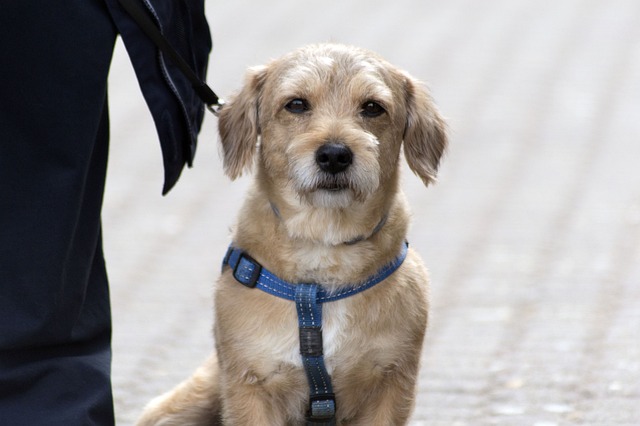Grooming Tools and Cleaning Supplies for Routine Care
Routine grooming and cleaning are essential parts of caring for a dog’s comfort and hygiene. This short overview highlights key tools and supplies—brushes, nail care items, bedding cleaners, crate liners, dental aids, and safe surface disinfectants—to help owners maintain a clean, healthy environment for their pets.

Routine care for a dog goes beyond occasional baths; it includes daily brushing, periodic trimming, and consistent cleaning of the spaces your pet uses. Establishing a routine helps control shedding, reduce odors, prevent matting, and limit the spread of dirt and allergens in your home. Effective routine care pairs appropriate grooming tools with targeted cleaning supplies so canine skin and coat remain healthy while bedding, crates, and travel gear stay sanitary.
How does grooming support canine health?
Grooming contributes to basic canine health by allowing early detection of skin issues, parasites, or lumps that might need attention. Regular grooming routines can improve coat condition and reduce the risk of matting, which can trap moisture and bacteria. Nail trimming and paw inspections help prevent mobility problems, while checking ears and eyes can catch signs of infection early. Grooming also complements nutrition and dental care, because a well-maintained coat and skin often reflect an overall balanced routine that includes proper treats, chews, and diet.
Choosing brushes, clippers, and grooming tools
Selecting the right brushes and clippers depends on coat type: slicker brushes and deshedding tools suit long or double coats, while bristle brushes and rubber curry combs work well for short-haired dogs. Invest in a quality clipper with appropriate blade guards for trimming, and a sturdy pair of rounded-tip scissors for delicate areas. Include nail clippers or a grinder, ear-cleaning solution, and grooming wipes in your kit to address quick touch-ups between baths. Properly sized harnesses, collars, and leashes can also make grooming sessions safer and more controlled.
Cleaning supplies for bedding and crates
Bedding and crates should be cleaned regularly to reduce odors and bacterial buildup. Machine-washable bed covers and crate pads simplify maintenance, while waterproof liners protect foam cushions. For hard surfaces, use pet-safe enzymatic cleaners to break down organic stains and odors. Clean crate bars and travel crates with mild disinfectants recommended for pets, then rinse and dry thoroughly. Frequent laundering of removable covers, vacuuming of bedding, and spot-cleaning between washes help keep sleeping areas hygienic and comfortable for your dog.
Managing dental care and chews
Dental hygiene is a major part of routine care that pairs grooming with preventive maintenance. Daily or regular toothbrushing using canine-formulated toothpaste reduces plaque and supports fresher breath. Chews and dental toys designed to scrape teeth can complement brushing but are not substitutes. When choosing dental chews, select appropriate sizes and textures to minimize choking risk. Monitor for signs of dental disease—bad breath, bleeding gums, or difficulty eating—and consult a veterinarian for professional cleaning if concerns arise.
Collars, leashes, harness, apparel, and safety for travel
Collars, leashes, and harnesses are both functional and safety items; ensure they fit properly to avoid rubbing or escape. For travel, pack washable bedding, a crate or secure harness, and spill-resistant bowls. Apparel can help some dogs in cold or wet conditions but should fit comfortably and not restrict movement. Regularly clean travel gear and inspect collars and leashes for wear to prevent failures while away from home. Consider safety-focused items like reflective strips or harnesses with reinforced fastenings when traveling at night or in busy areas.
Enrichment: toys, treats, and nutrition
Mental and physical enrichment supports grooming outcomes by reducing stress-related behaviors that can affect coat and skin health. Rotate durable toys and interactive feeders to maintain interest and prevent boredom. Use treats strategically for positive reinforcement during grooming, but balance them within an overall nutrition plan to avoid excess calories. Provide a varied mix of textures—including appropriate chews—to support dental health and satisfy natural chewing instincts. Bedding and crate placement can also influence enrichment; a comfortable, familiar space reduces anxiety and makes grooming easier.
Conclusion A consistent approach that pairs proper grooming tools with effective cleaning supplies helps maintain canine comfort and home hygiene. By selecting items suited to coat type, sleeping arrangements, travel needs, and dental care, owners can build a routine that supports overall wellbeing. Regular inspection and maintenance of gear, combined with appropriate enrichment and nutrition, keep daily care manageable and effective.






